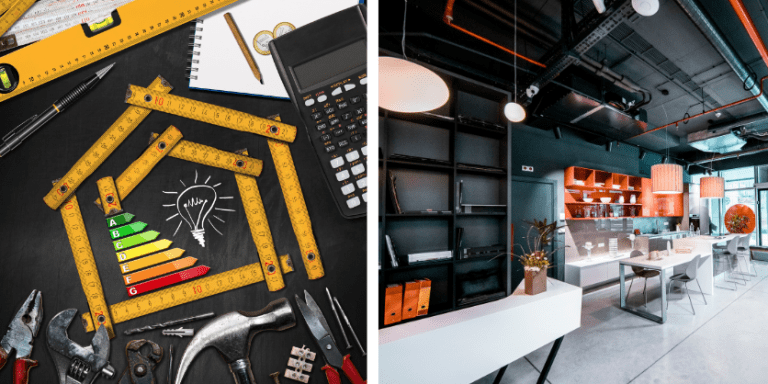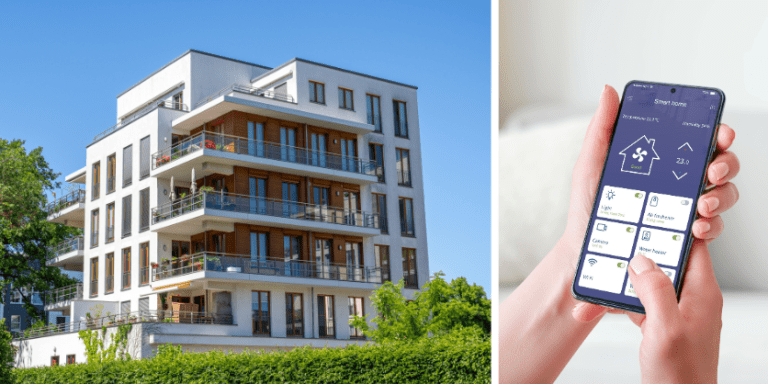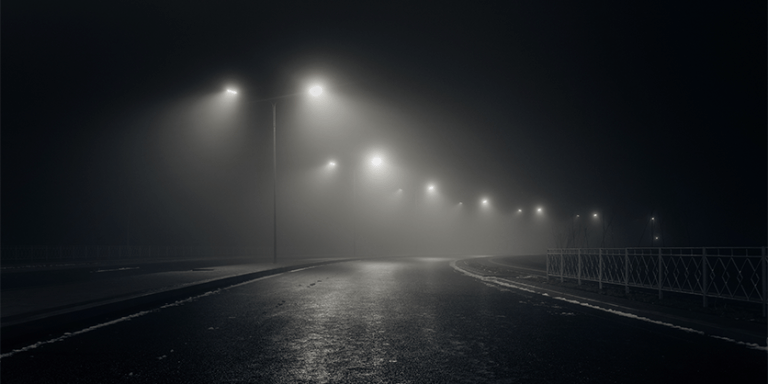Lighting Trends and Tomorrow’s Solutions: LANTANA LED’s Dynamic Sustainable Approach for Data Centers
By Line Goyette
We discussed lighting trends with Sam Rabinowitz, CEO of LANTANA LED, who is a champion of sustainable lighting for data centers. His company’s fixtures, powered by distributed low-voltage systems, offer enhanced energy efficiency and reliability. Rabinowitz emphasizes collaborative efforts in driving sustainability. LANTANA LED’s latest product lines, such as Illucent and Neoteric, cater to data center needs with innovative design and functionality.
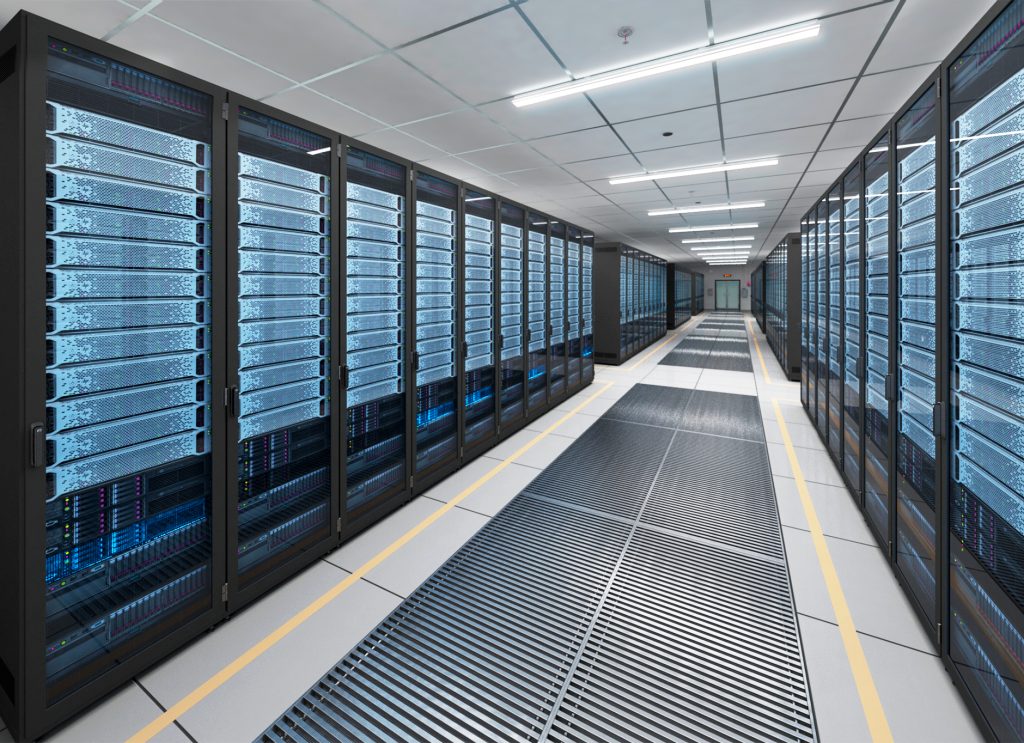
Vision and History
Q. On your website, it states that LANTANA LED is a forward-thinking company committed to revolutionizing lighting solutions. Could you expand on that statement and tell us more about LANTANA LED?
- Revolutionizing lighting with ultra-efficient, sustainable fixtures.
- Founded to meet the market’s need for innovative LED solutions.
LANTANA LED started as part of an industrialized construction company that leveraged innovation along with advanced manufacturing techniques and processes to streamline and optimize building construction. When we scoured the market for LED lighting that met the design aesthetic and functional requirements for our building projects, we couldn’t find anything that met our standards, so we set out to create our own.
We developed our first LED fixture about 12 years ago, and this was the advent of the broad-scale commercial application of LED technology in lighting. A team of architects, engineers, and product experts developed a remote DC-powered six-foot fixture. Originally it was just for internal use, but we recognized a larger need and launched LANTANA LED as its own company focused on creating the types of lighting we originally couldn’t find: ultra-efficient, sustainable, and modern lighting fixtures that were easy to install and maintain.
When we launched the product, our LED fixture was, in fact, the most efficient LED commercial fixture in the world. It had the highest efficiency rating for light output worldwide, and it remained at the top for many months. We have kept that drive for innovation and energy efficiency at the core of our DNA.
While LANTANA LED started with one original product, over the years we’ve expanded to offer a wide spectrum of commercial LED lighting products, delivering entire data center packages. We also continue to work in education, government, and general commercial spaces. Our approach combines innovation, sustainability, and customer education, providing not only top-notch products but also opportunities for our clients to stay informed about the latest advancements in LED technology.
Sustainability
Q. What does a more sustainable future mean to you?
- Advocates for collaborative efforts to drive meaningful change.
- Focuses on incremental improvements to enhance energy efficiency.
For me, a more sustainable future means companies working together to drive meaningful change. Right now, data centers in particular are looking for ways to improve the sustainability of their facilities. In addition to sourcing more eco-friendly technologies, I believe the answer lies in working with suppliers who are producing sustainable products. If every manufacturer focuses on making their products more efficient, even by 10%, we can start to see the needle move.
Those types of incremental changes product manufacturers make to improve the sustainability of their products might seem small but can result in major gains. Imagine the collective effect manufacturers can have on a single building project if they all contribute more eco-conscious products; we can considerably improve the overall energy efficiency of a single data center. Then, across multiple data centers, the collective energy savings can quickly add up, megawatts at a time. To me, that is how we create a sustainable future as suppliers: we consider how micro-level efficiencies can have a macro-level effect.
In addition to making consistent improvements that ensure LANTANA LED’s lights are as power-efficient as possible, we’re also dedicated to promoting responsible end-of-life recycling programs for our products, as well as using recycled and recyclable materials in our fixtures.
Q. In your chapter titled “Every Watt Counts – How Incremental Changes Can Deliver Major Sustainability Gains” in the Greener Data Book, you discuss the effects of lighting on power usage, efficiency, and maintenance in data centers. Could you elaborate on the impact of lighting?
Lighting is an often overlooked, but key consideration for data centers. Luckily, distributed low-voltage power and LED lighting are rapidly gaining popularity in data centers and they come with multiple benefits.
First, LED lights are far more energy efficient than traditional lighting. Studies have shown that using energy-efficient technologies such as LED lighting can reduce data center lighting energy usage by up to 70%. LED lighting is also known to produce significantly less heat than alternative forms of lighting, which is ideal for temperature-sensitive server rooms in data centers. Because cooling represents a significant energy draw for data centers, the ability to deploy lighting systems that don’t contribute to hotter server rooms helps operators conserve energy from cooling and reduce associated cooling costs over time.
The U.S. Department of Energy champions LED lighting as a highly energy-efficient technology that has the potential to fundamentally change the future of lighting in the United States. The department projects widespread use in the near future, estimating that by 2035, a majority of lighting installations will use LED technology, resulting in up to 569 TWh of energy savings, or roughly the output of more than 92 1,000 MW power plants.
According to the U.S. Department of Energy, a quality LED bulb can last three to five times longer than a compact fluorescent lamp (CFL) and 30 times longer than an incandescent bulb. Distributed low-voltage systems play a pivotal role in further enhancing the longevity of LED lighting compared to traditional line-voltage setups. The key lies in the efficient power delivery mechanism employed by distributed low-voltage systems, which significantly reduces stress on LEDs and helps prolong their lifespan.
In addition to longevity, distributed low-voltage power (DLVP) offers significant energy savings compared to line-voltage systems because of their inherent efficiency in power transmission. By utilizing lower voltages, these systems minimize energy loss during distribution, resulting in reduced electricity consumption and higher cost savings for businesses. The efficiency of DLVP is achieved through decreased resistance in the wiring, lower heat generation, and improved overall energy conservation.
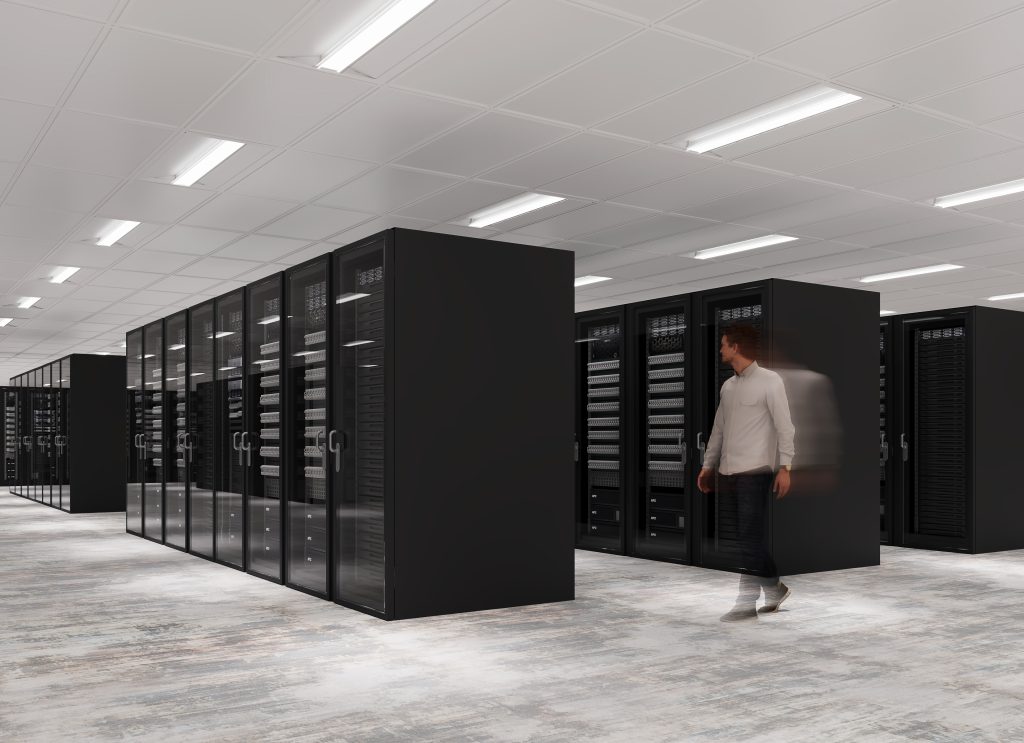
On Data Centers and Lighting
- Impact of Lighting in Data Centers:
- LED lighting offers up to 70% energy savings compared to traditional options.
- Distributed low-voltage power systems prolong LED lifespan and reduce energy loss.
- LANTANA LED’s Solutions for Data Centers:
- Quality fixtures engineered for energy efficiency and reliability.
- New product lines, such as Illucent and Neoteric, cater to data center needs.
Q. What are the particular needs of data centers?
The needs of a data center revolve around ensuring safety and security, reliability, efficiency, and scalability of the facility.
An employee injury can result in significant implications on the facility’s operations and overall performance. In addition to proper illumination for safe navigation and maintenance, lighting configurations must allow proper illumination for video surveillance and other security equipment. Maintaining a secure environment not only safeguards business continuity and regulatory compliance but also fosters trust among clients, stakeholders, and partners who rely on the data center’s protection of their information.
Data centers require lighting that operates effectively in high-temperature environments safely and efficiently. Insufficient or excessive illumination can result in poor visibility, unnecessary energy consumption, increased operational costs, and overall energy performance. Fixtures that lack the necessary temperature rating are likely to fail prematurely, increasing lifecycle costs.
Although budget is often a consideration, owners should take care not to sacrifice long-term savings with short-term costs. In fact, the right energy-efficient lighting solution with high-lumen output helps owners reclaim kilowatts and repurpose them into revenue-generating opportunities.
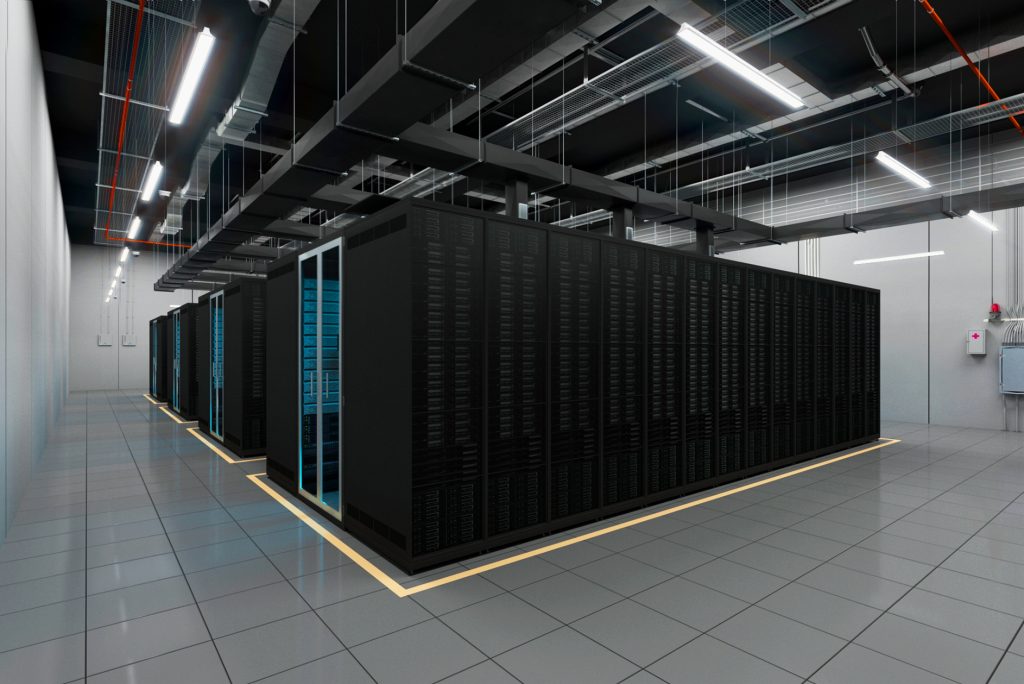
Q. How is LANTANA LED positioned specifically in the data center market, and what lighting solutions do you offer to meet the unique challenges faced by data centers?
LANTANA LED’s lighting is thoroughly evaluated and created to align with the most important factors for data center operators: energy efficiency, reliability, visibility and comfort, heat management, smart controls, compatibility with IT infrastructure, and maintenance and longevity.
To elaborate on those areas, we create quality lighting fixtures that can offer operators long-term savings in energy consumption and maintenance for better overall ROI. Our solutions have the high-lumen output data center operators seek, but they also produce less heat to ease a data center’s overall cooling requirements. Additionally, our lighting is UL-certified for elevated ambient operating temperatures, which is a key differentiator because it ensures that the fixtures will withstand the demanding temperatures typically found in data centers.
Safety is extremely important in a data center, with distributed low-voltage and various control options workers can control lights from a safe distance, making them less prone to falls from ladders and injury from electrical shocks. One common myth is that it’s expensive to convert from line voltage to a distributed low-voltage power option, which is what we suggest for data center operators. That’s really not the case. We help operators understand that this is an option that doesn’t require a complete overhaul to help them reap the benefits of distributed low-voltage power, including energy efficiency and reduced energy consumption. It also allows for greater flexibility in fixture placement and design.
Q. Have you recently launched any products specifically designed to meet the needs of data centers and other commercial facilities?
Yes, this year we announced the launch of three new and expanded lighting lines that prioritize sustainability, longevity, and ease of maintenance for our data center and commercial customers. Our new Illucent, Neoteric, and Edge LED fixture lines collectively offer a holistic lighting solution, not just for the server rooms, but also for conference rooms, entryways, and employee spaces. It allows us to deliver a well-rounded lighting solution that not only illuminates data centers effectively but also enhances operational efficiency, reliability, and overall user experience.
Like the design of our original fixture, we engineered our new lighting solutions by focusing on sustainability and energy efficiency while elevating the illumination and aesthetics of the space.
We also adhered to strict sustainability, efficiency, and maintenance standards, with special attention paid to temperature rating, speed of installation, ease of operation, and price.
Together, these lines encompass seven new LED lighting fixture styles, each delivering superior energy efficiency and quality backed by an extensive warranty. Various fixtures in these lines, like the Edge linear and Illucent troffer, were developed in close collaboration with data center owners, electrical contractors, and engineers and are designed specifically to eliminate pain points for commercial and industrial building operators.
About Sam Rabinowitz
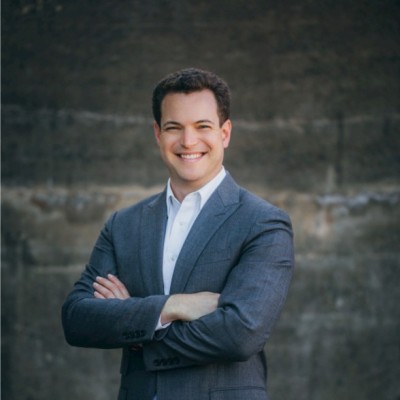
Sam Rabinowitz is an experienced leader of cross-functional teams, driving new physical product development and launch, and business strategy/development. He first began as a project manager with Project Frog, a pioneer of industrialized construction. Working his way up to the leadership team at Project Frog, he led the Lantana Luminaire (LED Lighting) Division. LANTANA LED has now grown into its own company where Sam is the CEO. He is also a featured author in the Greener Data Book launched on Earth Day 2024 and an opera singer at the San Francisco Opera. He holds a Master of Music, Classical Voice from the Manhattan School of Music.


